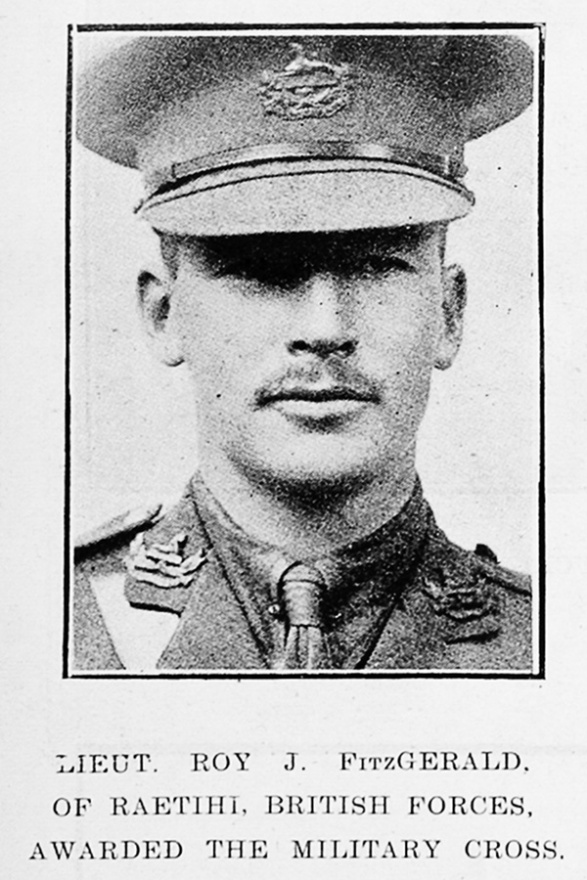
Roy James Fitzgerald
12th Battalion, Gloucestershire Regiment, attached to 35 Squadron, Royal Air Force
Killed in action, 1 July 1918
Born in Wellington in 1890 to parents Elizabeth and William, Roy James Fitzgerald was the youngest of five children. His father was a chemist and owned a well-known shop in the central city. Roy was educated locally, first at the Terrace School and then at Wellington College. He and his siblings reportedly owned a pet donkey which was a familiar sight on the streets of Wellington.
After finishing school, Roy trained as an engineer with a local firm, S. Luke and Co., before heading overseas. He was working for Elder Dempster, a British shipping company which operated between Britain and West Africa, when war broke out. Returning to England, Roy enlisted in the British Army. He gained a commission with the Gloucestershire Regiment, which left for the Western Front in November 1915.
The following year Roy was awarded a Military Cross after he assumed command of an assault when all the other officers were wounded, consolidating the defences before leading a party to establish posts in a nearby wood. At the end of the year he returned to London on leave and on 30 December married a young Englishwoman, Jean Cuthbert.
Roy was soon back at the front and in May 1917 was wounded in action and found unconscious by the Germans. He was captured but after five months made a daring escape with a fellow prisoner. The two men travelled at night for a week before reaching the Dutch border. They contacted the British authorities and were soon back in England, where Roy was briefly reunited with his brothers and sister, who were also serving.
In November 1917, Roy was sent to the Italian front with his regiment. He soon became renowned for his ability to capture Austro-Hungarian soldiers during night raids. The following spring, Roy transferred to the Royal Air Force and became an observer with 35 Squadron.
On 1 July 1918, five weeks into his new posting, Roy and his pilot were observing artillery over Coisy, northern France, when they were attacked by 10 enemy planes. The pilot survived the encounter but Roy was killed. Following his death one of his former officers wrote that Roy ‘was one of those exceptional men of iron nerve and powerful physique, who combined the great qualities of intelligent leadership, great initiative, and personal magnetism with splendid gallantry … [t]he whole regiment was devoted to him’.[1]
Roy is buried at Vignacourt British Cemetery in northern France.
Further information
Auckland War Memorial Museum Online Cenotaph record – Roy Fitzgerald
Commonwealth War Graves Commission record – Roy Fitzgerald
'Local and general', Dominion, 7 December 1916, p. 6
'On service', Evening Post, 20 September 1917, p. 7
'Escape from Germany', New Zealand Herald, 8 January 1918, p. 5
'Escape from Germany', Fielding Star, 11 February 1918, p. 4
'Personal matters', Evening Post, 25 July 1918, p. 8
'All sorts of people', Free Lance, 25 July 1918, p. 4
'Local and general', Evening Post, 4 September 1918, p. 6
'In many fields', Evening Post, 16 October 1918, p. 8
Adam Claasen, Fearless: the extraordinary untold story of New Zealand’s Great War airmen, Massey University Press, Auckland, 2017

Community contributions